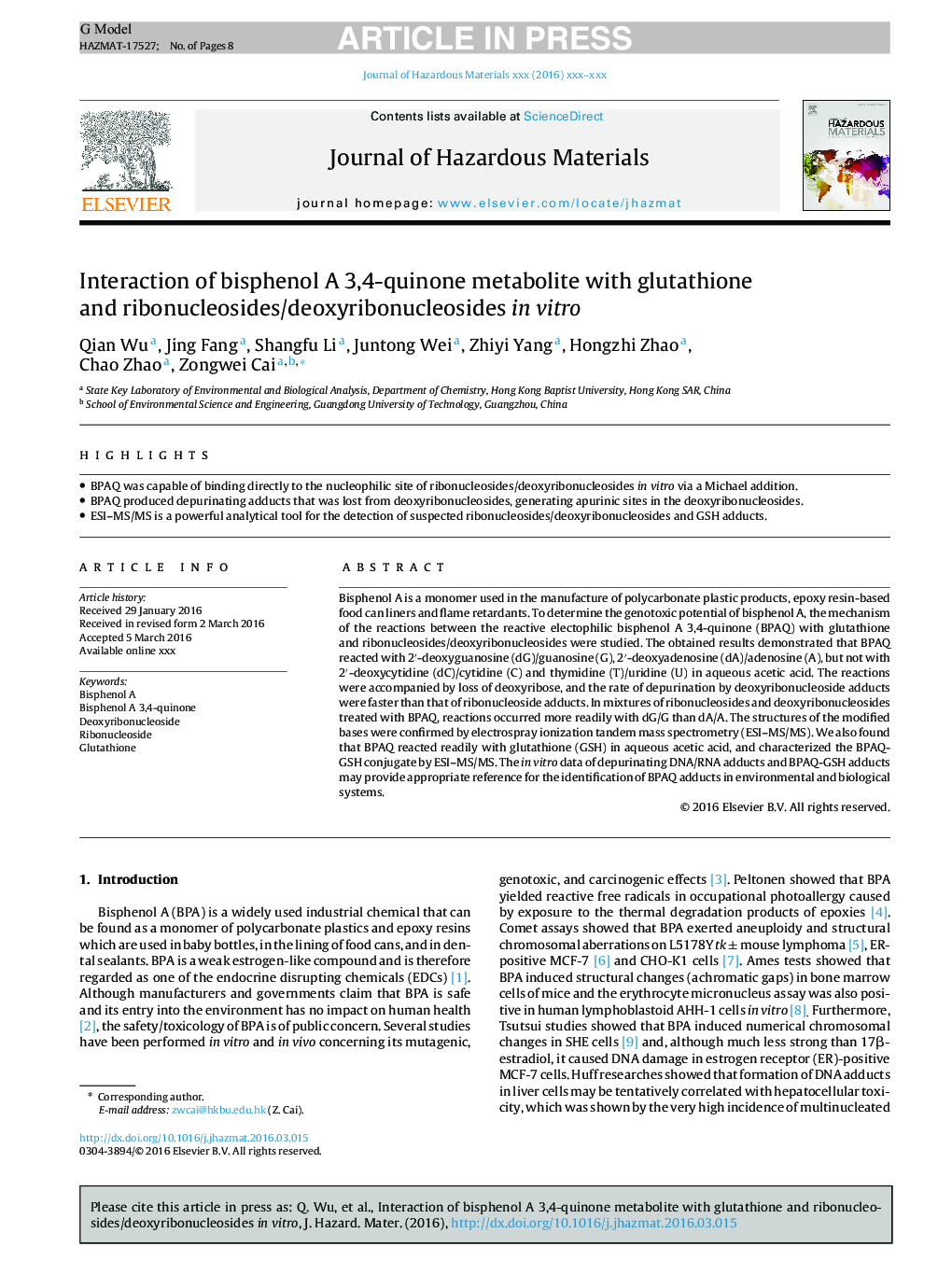| Article ID | Journal | Published Year | Pages | File Type |
|---|---|---|---|---|
| 4979952 | Journal of Hazardous Materials | 2017 | 8 Pages |
Abstract
Bisphenol A is a monomer used in the manufacture of polycarbonate plastic products, epoxy resin-based food can liners and flame retardants. To determine the genotoxic potential of bisphenol A, the mechanism of the reactions between the reactive electophilic bisphenol A 3,4-quinone (BPAQ) with glutathione and ribonucleosides/deoxyribonucleosides were studied. The obtained results demonstrated that BPAQ reacted with 2â²-deoxyguanosine (dG)/guanosine (G), 2â²-deoxyadenosine (dA)/adenosine (A), but not with 2â²-deoxycytidine (dC)/cytidine (C) and thymidine (T)/uridine (U) in aqueous acetic acid. The reactions were accompanied by loss of deoxyribose, and the rate of depurination by deoxyribonucleoside adducts were faster than that of ribonucleoside adducts. In mixtures of ribonucleosides and deoxyribonucleosides treated with BPAQ, reactions occurred more readily with dG/G than dA/A. The structures of the modified bases were confirmed by electrospray ionization tandem mass spectrometry (ESI-MS/MS). We also found that BPAQ reacted readily with glutathione (GSH) in aqueous acetic acid, and characterized the BPAQ-GSH conjugate by ESI-MS/MS. The in vitro data of depurinating DNA/RNA adducts and BPAQ-GSH adducts may provide appropriate reference for the identification of BPAQ adducts in environmental and biological systems.
Related Topics
Physical Sciences and Engineering
Chemical Engineering
Chemical Health and Safety
Authors
Qian Wu, Jing Fang, Shangfu Li, Juntong Wei, Zhiyi Yang, Hongzhi Zhao, Chao Zhao, Zongwei Cai,
